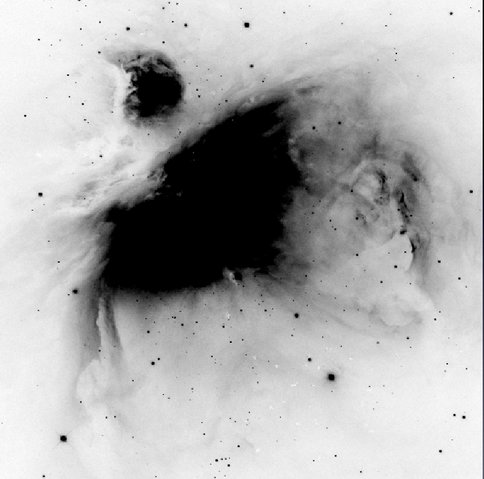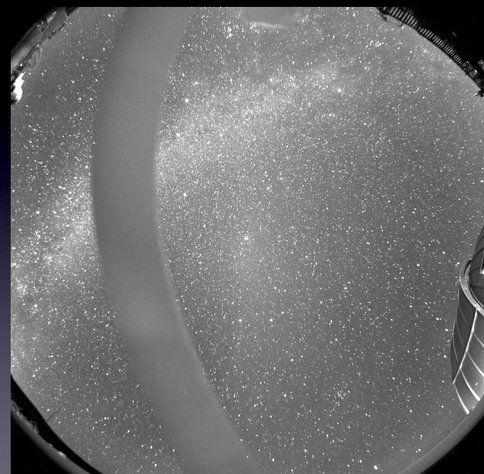2011 Annual Science Report
 University of Hawaii, Manoa
Reporting | SEP 2010 – AUG 2011
University of Hawaii, Manoa
Reporting | SEP 2010 – AUG 2011
VYSOS Construction
Project Summary
The VYSOS project aims at surveying all the major star forming regions across the entire northern and southern sky for variable young stars.using two small telescopes and robotics.
As instrument implementation continues, We are working with Timm Riesen and Karen Meech to study the evolution of comet tails and to improve data relating to comet-focused missions.
Project Progress
The major effort during the past year continues to be the preparation of the VYSOS project. VYSOS (Variable Young Stellar Objects Survey) consists of a 20 inch telescope, mounted in Hawai’i on Mauna Loa and a 16 inch telescope already mounted in Chile at Cerro Armazones. The northern telescope is owned and operated by team member Bo Reipurth, and the southern telescope is owned and operated by Rolf Chini, a colleague at the Ruhr-Universitat Bochum in Germany. The goal of the project is to have these two fully robotic telescopes monitor all star forming regions along the entire Galactic plane within about 2 kpc in order to understand the photometric variability of solar-like young stars. Such variability can have a number of causes, mainly accretion activity, star spots, eclipses by companions or dust clouds, and magnetic reconnection events. Almost nothing is known about the timescales and amplitudes of these phenomena, and the VYSOS project will put this on a firm footing by monitoring many tens of thousands of young low-mass stars over the next decade or more.
To survey larger swaths of the sky, we have installed a 135 mm apochromatic refractor at the Mauna Loa Observatory. It has a 2.9 ×2.9 degree field and can reach 17th magnitude in 5 min exposures. We are currently performing surveys of large areas of the Milky Way with this telescope, together with a similar survey done by a 150 mm refractor installed at our site in Chile. These small but highly efficient telescopes will also be used for monitoring bright comets as they enter the inner Solar System. Our northern refractor alone has already obtained over 30,000 images. During this past year, however, we have had problems with the dome for this telescope, and after extensive repairs we are now ready to resume observations. We have also developed an all-sky camera that allows us to monitor the observing conditions via the internet. During the past year we have received a grant that has allowed us to order a second 135 mm apochromatic refractor, and the (considerably delayed) construction has just been completed, with delivery before the end of the year. This will be mounted next to the first refractor, and the two will perform simultaneous observations in an r- and and i-filter, so we get information not only on variability but also on color changes. We have started a collaboration with Keivan Stassun at Vanderbilt University, who is now modifying a reduction package that allows us to efficiently and autonomously reduce the vast data sets produced by the telescopes. This package will be delivered by the end of 2011. UHNAI postdoctoral fellow Josh Walawender left the project in April 2011 to take up a faculty position at University of Hawaii Hilo, and a new postdoc, Hsin-Fang Chiang, will take his place in early November 2011.
The VYSOS facility on Mauna Loa – a powerful new facility for star formation studies.
Image of star-forming region M42 taken with VYSOS-20.
– Image from the new high-quality all sky camera. This camera allows photometry of individual stars, so that the presence of very faint clouds can be detected.
Publications
-
Armond, T., Reipurth, B., Bally, J., & Aspin, C. (2011). Star formation in the “Gulf of Mexico”. A&A, 528, A125. doi:10.1051/0004-6361/200912671
-
Reipurth, B., Mikkola, S., Connelley, M., & Valtonen, M. (2010). ORPHANED PROTOSTARS. The Astrophysical Journal, 725(1), L56–L61. doi:10.1088/2041-8205/725/1/l56
- Kazarovets, E.V., Reipurth, B. & Samus, N.N. (2011). GCVS Names for Interesting Young Variable Stars. Peremennye Zvezdy, 31(2).
- Raga, A.C., Reipurth, B., Cantó, J., Sierra-Flores, M.M. & Guzmán, M.V. (2011). An overview of the observational and theoretical studies of HH 1 and 2. Revista Mexicana de Astronomía y Astrofísica, 47: 425-437.
- Thommes, J., Reipurth, B., Aspin, C. & Herbig, G.H. (2011). V900 Monocerotis. Central Bureau Electronic Telegrams, 2795(1).
-
PROJECT INVESTIGATORS:
-
PROJECT MEMBERS:
Rolf Chini
Collaborator
Keivan Stassun
Collaborator
Josh Walawender
Postdoc
-
RELATED OBJECTIVES:
Objective 1.2
Indirect and direct astronomical observations of extrasolar habitable planets.



